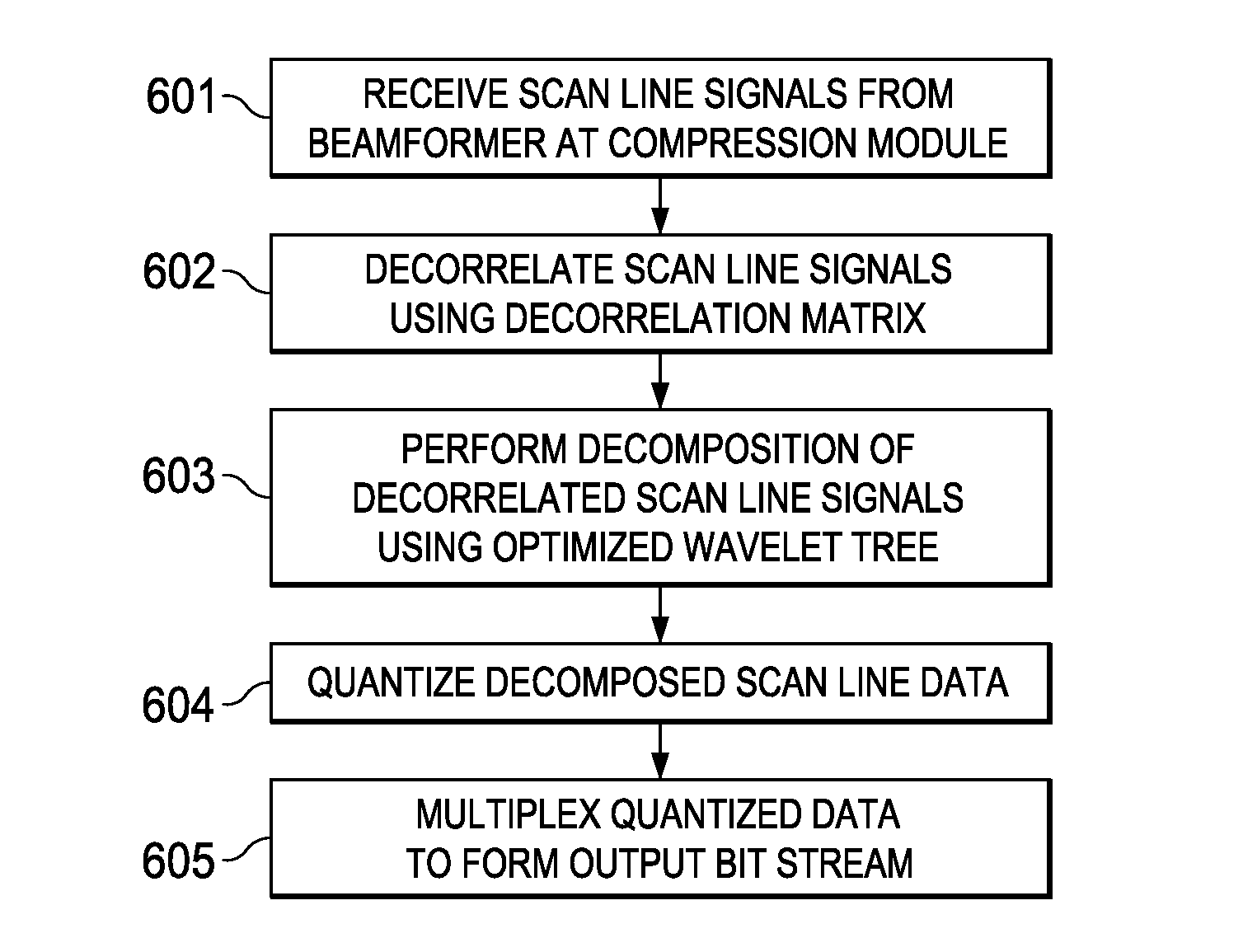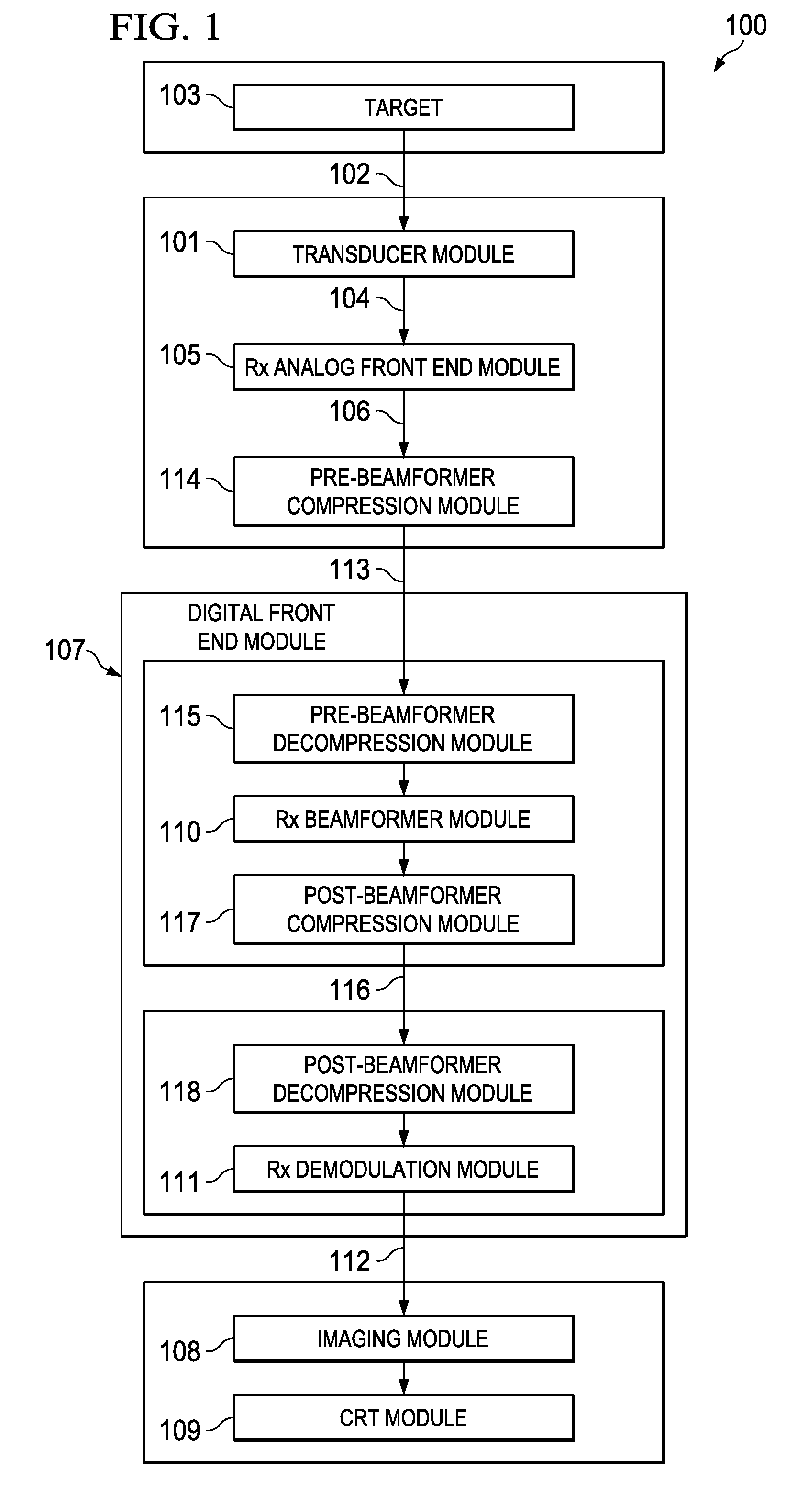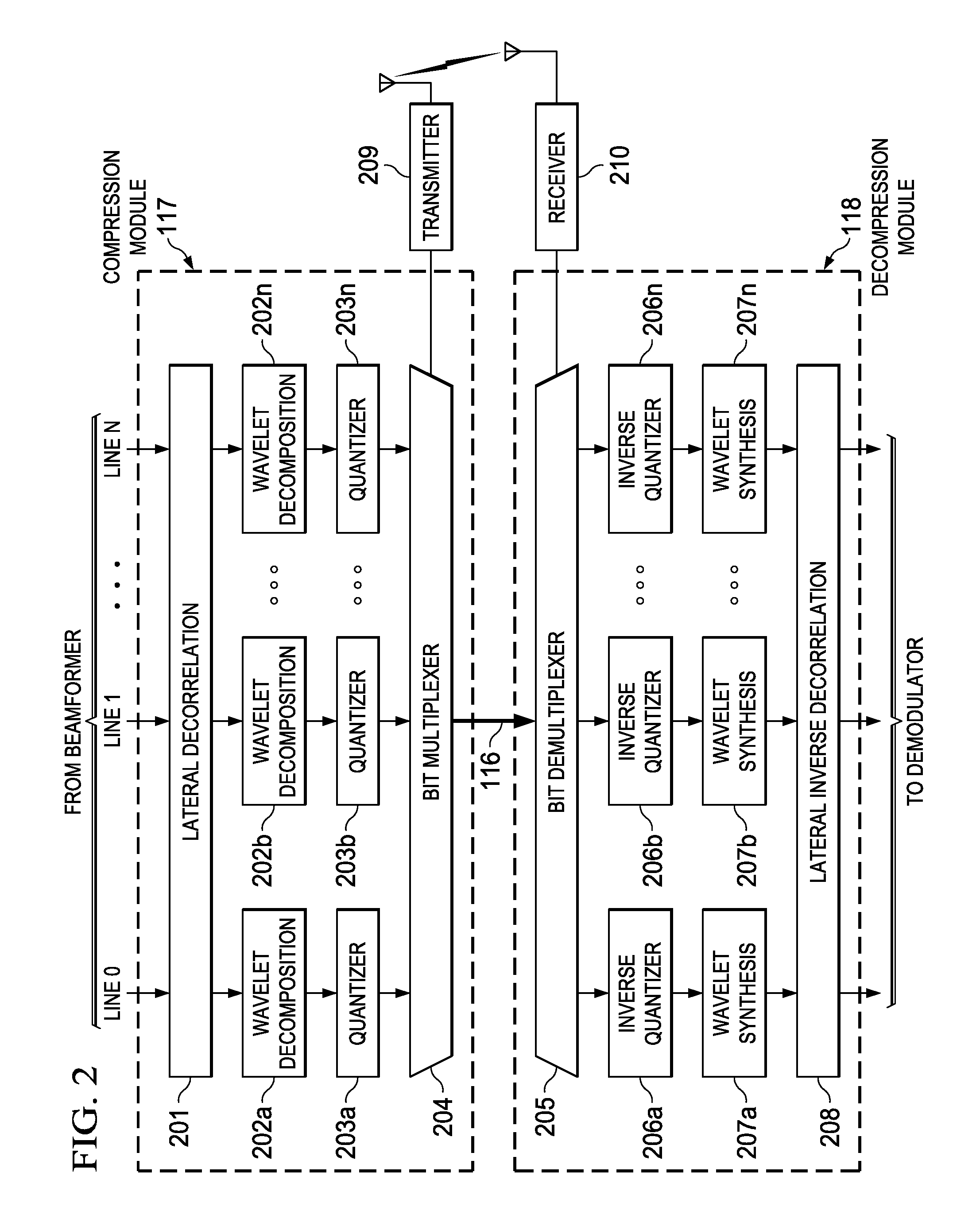Post-Beamformer Ultrasound Compression
a post-beamformer and compression technology, applied in the field of generating ultrasound images, can solve the problems of a major challenge in the throughput of ultrasound data, and achieve the effects of efficient wavelet packet representation, high decorrelation of input samples, and optimized performan
- Summary
- Abstract
- Description
- Claims
- Application Information
AI Technical Summary
Benefits of technology
Problems solved by technology
Method used
Image
Examples
Embodiment Construction
[0020]The invention now will be described more fully hereinafter with reference to the accompanying drawings. This invention may, however, be embodied in many different forms and should not be construed as limited to the embodiments set forth herein. Rather, these embodiments are provided so that this disclosure will be thorough and complete, and will fully convey the scope of the invention to those skilled in the art. One skilled in the art may be able to use the various embodiments of the invention.
Imaging Device
[0021]FIG. 1 is a block diagram showing the receiver portion of an imaging device 100 according to disclosed embodiments. The imaging device includes a plurality of transducers in transducer module 101, which receives echo signals 102 from a target 103 that is being imaged. The plurality of transducers operate to send a plurality of transmitted pulses to target 103 and to receive a plurality of echo pulses 102 reflected from the target 103. In one embodiment, imaging devic...
PUM
 Login to View More
Login to View More Abstract
Description
Claims
Application Information
 Login to View More
Login to View More - R&D
- Intellectual Property
- Life Sciences
- Materials
- Tech Scout
- Unparalleled Data Quality
- Higher Quality Content
- 60% Fewer Hallucinations
Browse by: Latest US Patents, China's latest patents, Technical Efficacy Thesaurus, Application Domain, Technology Topic, Popular Technical Reports.
© 2025 PatSnap. All rights reserved.Legal|Privacy policy|Modern Slavery Act Transparency Statement|Sitemap|About US| Contact US: help@patsnap.com



